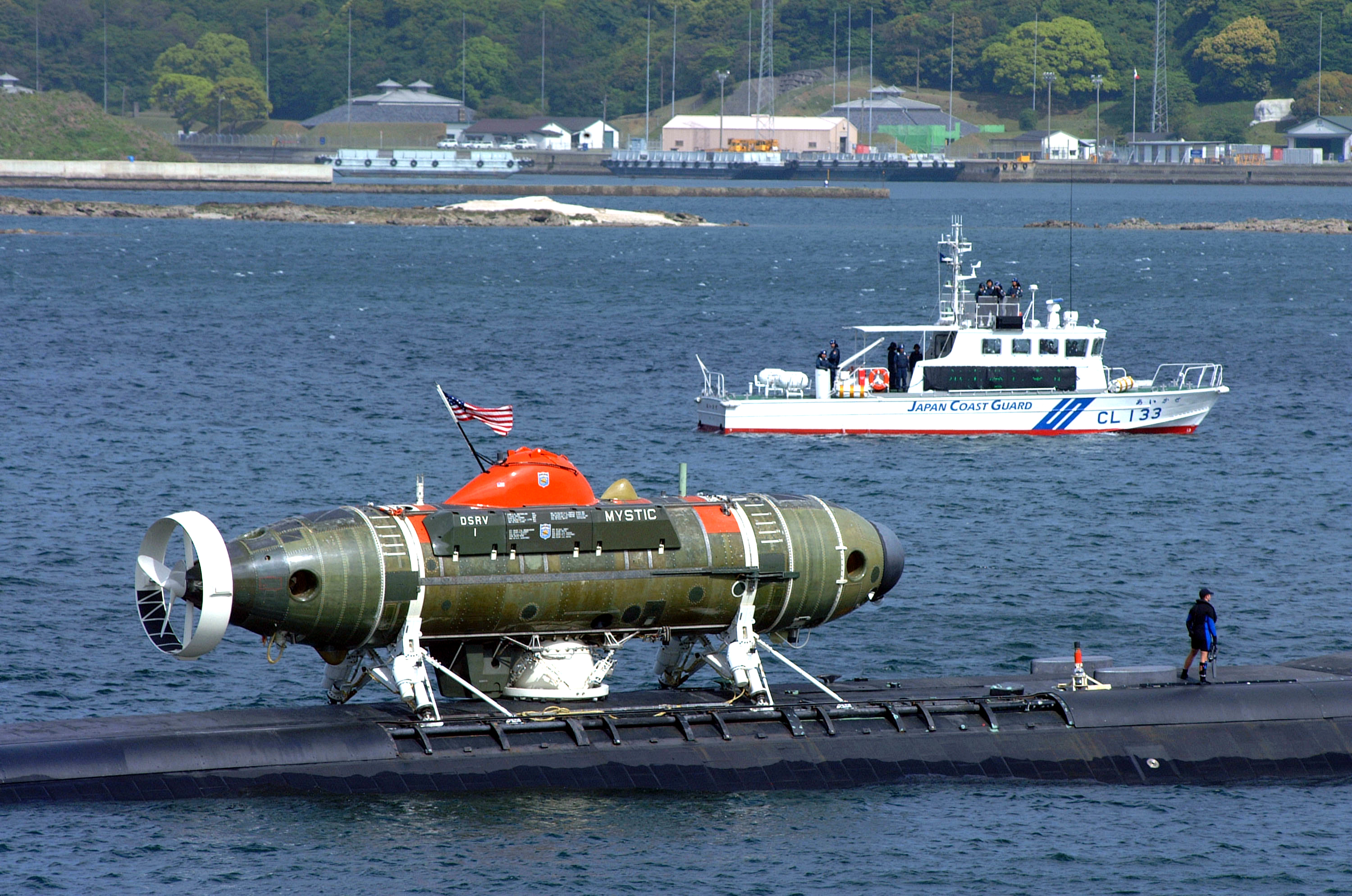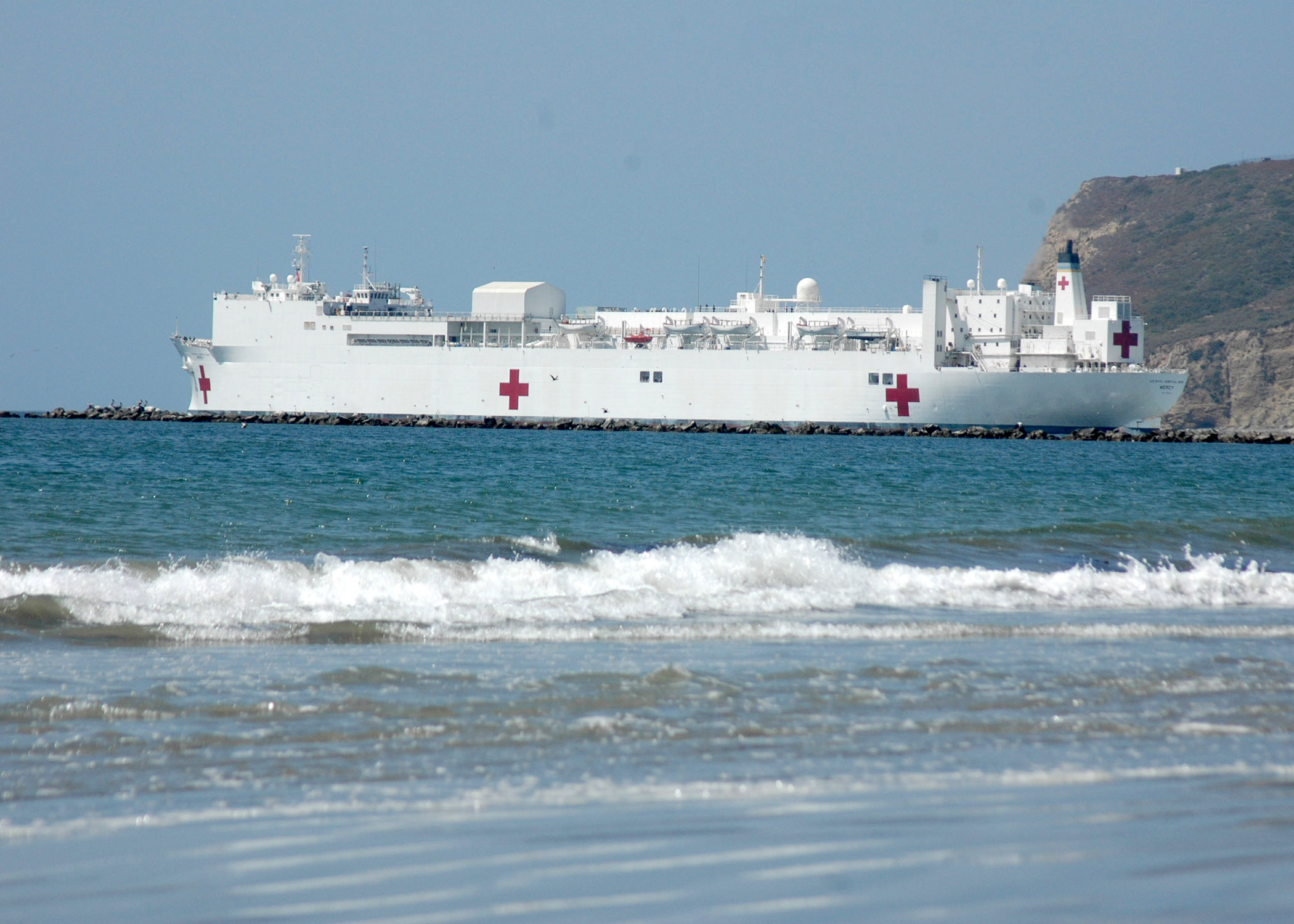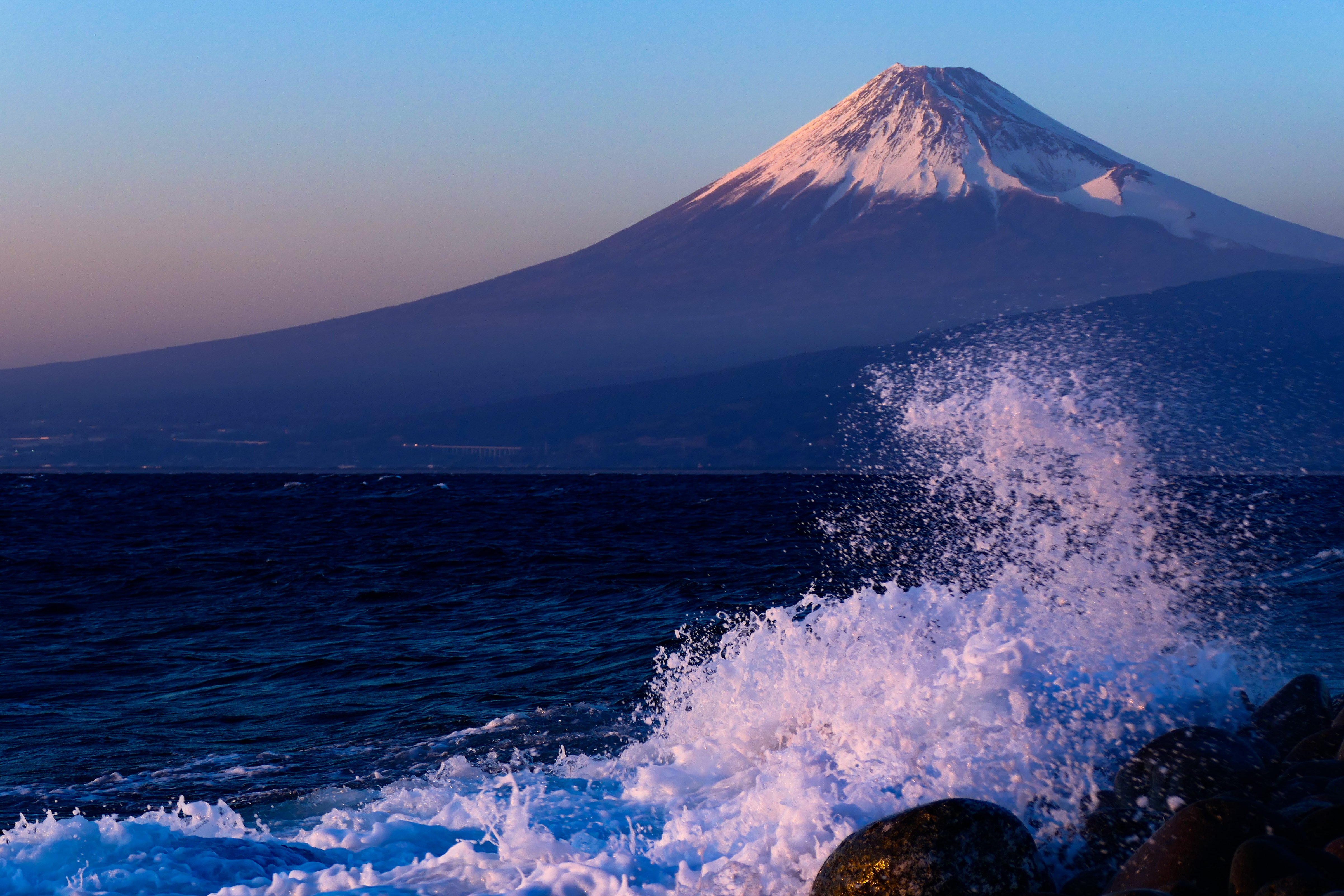|
JS Chiyoda (2016)
JS ''Chiyoda'' (ASR-404) is a submarine rescue ship of Japan Maritime Self-Defense Force. Development and design It was built as a replacement for the dilapidated submarine rescue ship JS Chiyoda. In terms of design, it is said to be an expanded version of the submarine rescue ship JS Chihaya. The appearance is almost the same as Chihaya, but the mast has been changed to a tower shape. Both the installed DSRV and ROV are new, and the number of people that can be rescued by one dive has been increased from 12 to 16 on the Chihaya-equipped boat, and the battery has been changed from a silver / zinc secondary battery to a lithium-ion secondary battery. We changed it to shorten the charging time. ROVs have significantly improved mobility and search ability, making it possible to accurately check the status of distressed submarines that DSRVs have traditionally been in charge of. Like the older Chiyoda and Chihaya , the ship has a Deep Submergence Rescue Vehicle (DSRV) to rescue ... [...More Info...] [...Related Items...] OR: [Wikipedia] [Google] [Baidu] |
Kobe
Kobe ( , ; officially , ) is the capital city of Hyōgo Prefecture Japan. With a population around 1.5 million, Kobe is Japan's seventh-largest city and the third-largest port city after Tokyo and Yokohama. It is located in Kansai region, which makes up the southern side of the main island of Honshū, on the north shore of Osaka Bay. It is part of the Keihanshin metropolitan area along with Osaka and Kyoto. The Kobe city centre is located about west of Osaka and southwest of Kyoto. The earliest written records regarding the region come from the '' Nihon Shoki'', which describes the founding of the Ikuta Shrine by Empress Jingū in AD 201.Ikuta Shrine official website – "History of Ikuta Shrine" (Japanese) [...More Info...] [...Related Items...] OR: [Wikipedia] [Google] [Baidu] |
Deep-submergence Rescue Vehicle
A deep-submergence rescue vehicle (DSRV) is a type of deep-submergence vehicle used for rescue of downed submarines and clandestine missions. While DSRV is the term most often used by the United States Navy, other nations have different designations for their vehicles. List of deep submergence rescue vehicles Australian models ASRV ''Remora'' ("Really Excellent Method Of Rescuing Aussies") was the Australian navy's DSRV. It is based on a diving bell design. Chinese models The People's Republic of China has three Type 925 Dajiang class and three Type 926 class. Each ship is equipped with either two Type 7103 DSRV or one LR7 crewed submersible undersea rescue vehicle. European models France, Norway and the UK share the NATO Submarine Rescue System programme. Italian models Italy operates , equipped with the SRV-300 submersible in a submarine rescue role * The SRV-300, built by Drass-Galeazzi, was delivered in 1999 and can operate up to depth, hosting 12 persons in the ... [...More Info...] [...Related Items...] OR: [Wikipedia] [Google] [Baidu] |
Inubōsaki Lighthouse
is a lighthouse on Cape Inubō, in the city of Chōshi, Chiba, Chōshi, Chiba Prefecture Japan. It is notable as one of the few lighthouses whose original lens was a first order Fresnel lens, the strongest type of Fresnel lens. It is a Tangible Cultural Properties of Japan, Registered Tangible Cultural Property of Japan. The lighthouse is located within the borders of the Suigo-Tsukuba Quasi-National Park. History Although not one of eight lighthouses to be built in Meiji period Japan under the provisions of the Anglo-Japanese Treaty of Amity and Commerce of 1858, signed by the Bakumatsu period Tokugawa Shogunate, the need for a lighthouse at Cape Inubō for the safety of vessels on the northeastern approaches to Tokyo was recognized at an early time after Japan was opened to the West. The wreck of the Tokugawa navy warship Japanese warship Mikaho, ''Mikaho'' in a typhoon on the rocks of Cape Inubō with the loss of 13 lives on October 6, 1868 further emphasized the need for a ... [...More Info...] [...Related Items...] OR: [Wikipedia] [Google] [Baidu] |
USNS Mercy (T-AH-19)
USNS ''Mercy'' (T-AH-19) is the lead ship of her class of hospital ships in non-commissioned service with the United States Navy. Her sister ship is . She is the third US Navy ship to be named for the virtue mercy. In accordance with the Geneva Conventions, ''Mercy'' and her crew do not carry any offensive weapons, though defensive weapons are available. United States Naval Ship (USNS) ''Mercy'' was built as a , SS ''Worth'', by National Steel and Shipbuilding Company, San Diego, California, in 1976. Starting in July 1984, she was renamed and converted to a hospital ship by the same company. Launched on 20 July 1985, ''Mercy'' was placed in service on 8 November 1986. She has a raised forecastle, a transom stern, a bulbous bow, an extended deckhouse with a forward bridge, and a helicopter-landing deck with a flight-control facility. The conversions from oil tankers cost $208 million per ship and took 35 months to complete. The ''Mercy''-class hospital ships are the third larg ... [...More Info...] [...Related Items...] OR: [Wikipedia] [Google] [Baidu] |
Mercy-class Hospital Ship
The ''Mercy'' class of hospital ships are converted San Clemente-class oil tanker, ''San Clemente''-class Oil tanker, supertankers used by the United States Navy. Originally built in the 1970s by the National Steel and Shipbuilding Company, they were acquired by the Navy and converted into hospital ships, coming into service in 1986 and 1987. ''Mercy'' class replaced the Haven-class hospital ship, ''Haven''-class hospital ships. The ships are operated by Military Sealift Command and are designed to provide emergency, on-site care for American combatant forces, and also for use in support of disaster relief and humanitarian operations. Each ship contains twelve fully equipped operating theater, operating rooms, a 1,000-bed hospital facility, radiological services, a medical laboratory, pharmacy, optometry lab, CT scan equipment, and two electrolysis of water, oxygen-producing plants. Ships Two ships of the class were put into service: * (ex SS ''Worth'') * (ex SS ''Rose City'') ... [...More Info...] [...Related Items...] OR: [Wikipedia] [Google] [Baidu] |
United States Navy
The United States Navy (USN) is the maritime service branch of the United States Armed Forces and one of the eight uniformed services of the United States. It is the largest and most powerful navy in the world, with the estimated tonnage of its active battle fleet alone exceeding the next 13 navies combined, including 11 allies or partner nations of the United States as of 2015. It has the highest combined battle fleet tonnage (4,635,628 tonnes as of 2019) and the world's largest aircraft carrier fleet, with eleven in service, two new carriers under construction, and five other carriers planned. With 336,978 personnel on active duty and 101,583 in the Ready Reserve, the United States Navy is the third largest of the United States military service branches in terms of personnel. It has 290 deployable combat vessels and more than 2,623 operational aircraft . The United States Navy traces its origins to the Continental Navy, which was established during the American Revo ... [...More Info...] [...Related Items...] OR: [Wikipedia] [Google] [Baidu] |
Sagami Bay
lies south of Kanagawa Prefecture in Honshu, central Japan, contained within the scope of the Miura Peninsula, in Kanagawa, to the east, the Izu Peninsula, in Shizuoka Prefecture, to the west, and the Shōnan coastline to the north, while the island of Izu Ōshima marks the southern extent of the bay. It lies approximately southwest of the capital, Tokyo. Cities on the bay include Odawara, Chigasaki, Fujisawa, Hiratsuka, Itō, and Kamakura. History The center of the Great Kantō earthquake in 1923 was deep beneath Izu Ōshima Island in Sagami Bay. It devastated Tokyo, the port city of Yokohama, and the surrounding prefectures of Chiba, Kanagawa, and Shizuoka, and caused widespread damage throughout the Kantō region. The shallow nature of the seabed on the north of the bay, and the funnelling effect of tsunami and typhoon wave energy, contributed to certain parts of the Shonan coast having suffered considerable damage, including the destruction of the Kōtoku-in temple hou ... [...More Info...] [...Related Items...] OR: [Wikipedia] [Google] [Baidu] |
Hatsushima
is an island in Sagami Bay, Japan. Administratively, it is part of the city of Atami, Shizuoka Prefecture, from which it can be reached by ferry. The island is approximately 10 kilometers from the ferry landing in downtown Atami. The island is inhabited, with the population mostly residing on the northern side of the island. As of 2018, the island had a population of 193 people in 114 households. Geology Hatsushima is located within the caldera forming Atami Bay, and was created by an uplift of the seafloor due to volcanic activity. This uplifting has occurred many times in the island's geological history, as evidenced by the many Terrace (geology), terraces formed by various uplifts. The elevation of the island is above sea level, and the island grew in height approximately two meters as a result of the 1923 Great Kantō earthquake. History Hatsushima has been inhabited since prehistoric times, and remains from the Jōmon period have been found in the island's interior. It i ... [...More Info...] [...Related Items...] OR: [Wikipedia] [Google] [Baidu] |
Shizuoka Prefecture
is a prefecture of Japan located in the Chūbu region of Honshu. Shizuoka Prefecture has a population of 3,637,998 and has a geographic area of . Shizuoka Prefecture borders Kanagawa Prefecture to the east, Yamanashi Prefecture to the northeast, Nagano Prefecture to the north, and Aichi Prefecture to the west. Shizuoka is the capital and Hamamatsu is the largest city in Shizuoka Prefecture, with other major cities including Fuji, Numazu, and Iwata. Shizuoka Prefecture is located on Japan's Pacific Ocean coast and features Suruga Bay formed by the Izu Peninsula, and Lake Hamana which is considered to be one of Japan's largest lakes. Mount Fuji, the tallest volcano in Japan and cultural icon of the country, is partially located in Shizuoka Prefecture on the border with Yamanashi Prefecture. Shizuoka Prefecture has a significant motoring heritage as the founding location of Honda, Suzuki, and Yamaha, and is home to the Fuji International Speedway. History Shizuoka Prefe ... [...More Info...] [...Related Items...] OR: [Wikipedia] [Google] [Baidu] |
Itō, Shizuoka
280px, Itō City Hall is a city located on the eastern shore of the Izu Peninsula in Shizuoka Prefecture, Japan. , the city had an estimated population of 68,773 in 36,717 households and a population density of 550 persons per km². The total area was . Geography Itō is located in eastern Shizuoka Prefecture, on the northeast corner of Izu Peninsula, facing Sagami Bay on the Pacific Ocean. The landscape is hilly, and the heavily indented coastline is scenic. Much of the coastal area of the city is within the Fuji-Hakone-Izu National Park. The city is located within the Izu-Tobu volcanic zone, and is subject to frequent earthquakes. The area is noted for its onsen hot spring resorts. Surrounding municipalities Shizuoka Prefecture *Atami *Izu *Izunokuni * Higashiizu Demographics Per Japanese census data, the population of Itō peaked in around the year 2000, and has declined slightly since. Climate The city has a climate characterized by hot and humid summers, and rel ... [...More Info...] [...Related Items...] OR: [Wikipedia] [Google] [Baidu] |
Commissioned (ship)
Ship commissioning is the act or ceremony of placing a ship in active service and may be regarded as a particular application of the general concepts and practices of project commissioning. The term is most commonly applied to placing a warship in active duty with its country's military forces. The ceremonies involved are often rooted in centuries-old naval tradition. Ship naming and launching endow a ship hull with her identity, but many milestones remain before she is completed and considered ready to be designated a commissioned ship. The engineering plant, weapon and electronic systems, galley, and other equipment required to transform the new hull into an operating and habitable warship are installed and tested. The prospective commanding officer, ship's officers, the petty officers, and seamen who will form the crew report for training and familiarization with their new ship. Before commissioning, the new ship undergoes sea trials to identify any deficiencies needing correct ... [...More Info...] [...Related Items...] OR: [Wikipedia] [Google] [Baidu] |
Ceremonial Ship Launching
Ceremonial ship launching involves the performance of ceremonies associated with the process of transferring a vessel to the water. It is a nautical tradition in many cultures, dating back thousands of years, to accompany the physical process with ceremonies which have been observed as public celebration and a solemn blessing, usually but not always, in association with the launch itself. Ship launching imposes stresses on the ship not met during normal operation and, in addition to the size and weight of the vessel, represents a considerable engineering challenge as well as a public spectacle. The process also involves many traditions intended to invite good luck, such as christening by breaking a sacrificial bottle of champagne over the bow as the ship is named aloud and launched. Methods There are three principal methods of conveying a new ship from building site to water, only two of which are called "launching". The oldest, most familiar, and most widely used is th ... [...More Info...] [...Related Items...] OR: [Wikipedia] [Google] [Baidu] |







_underway_2009.jpg)
